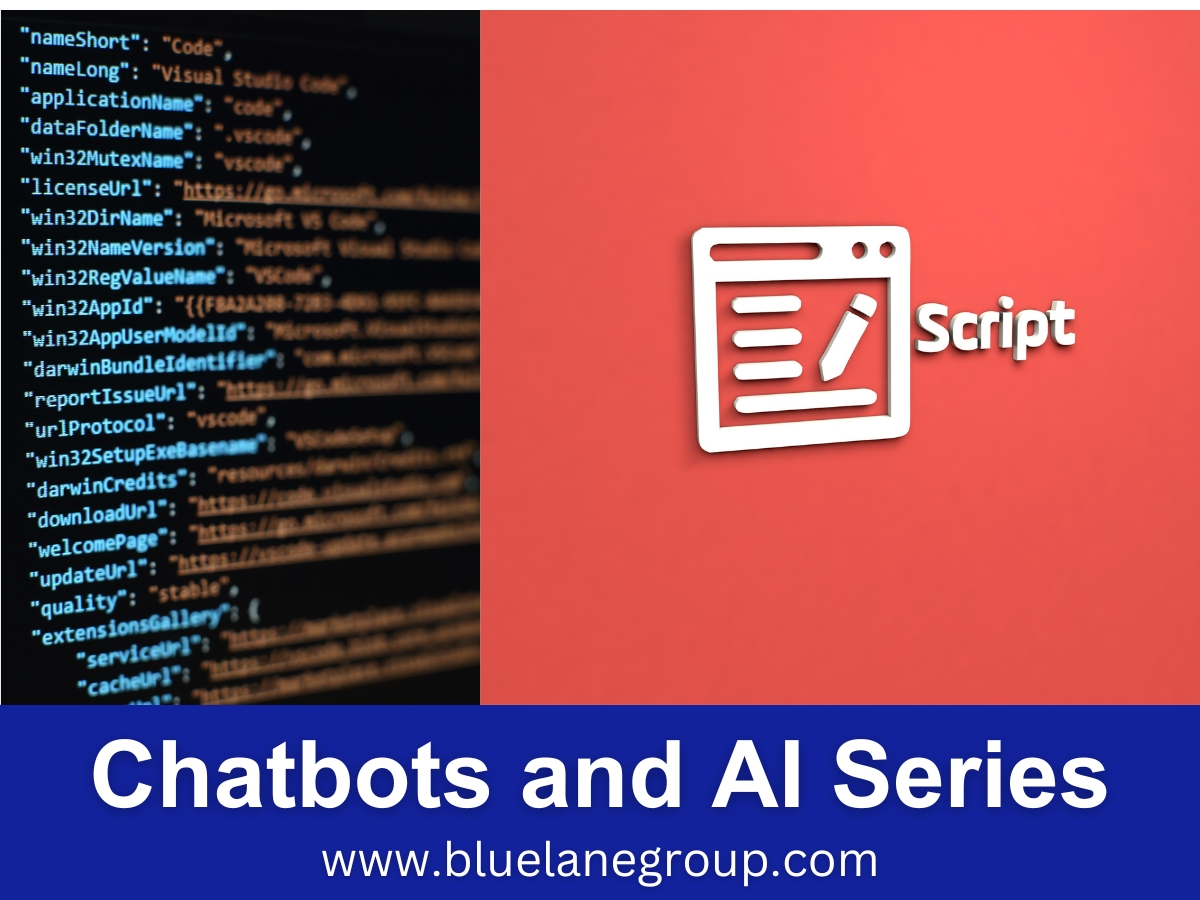This guide comprehensively explores chatbot scripts, the foundation for engaging and efficient chatbot interactions. We’ll dive into their crafting process, the importance of tailoring scripts to audience needs, and their pivotal role in ensuring chatbot success across industries and platforms.
Quick Rundown – For the Fast Trackers:
- Chatbot scripts encompass the predefined dialogues and conversational pathways a chatbot uses to engage with users. These scripts determine the bot’s responses, personality, tone, and ability to handle varied user queries. A well-crafted script can mean the difference between a robotic bot and one that seems almost human, capable of building rapport and guiding users effectively.
- In the realm of chatbot development, scripts serve as the foundational blueprints. They demand careful crafting, continuous refining, and meticulous attention to user feedback. Recognizing and harnessing the potential of chatbot scripts is paramount for businesses aiming to deliver superior user experiences, drive engagement, and ensure seamless digital interactions.
Welcome to the eighth Blue Lane Group article in the Best Chatbots for Customer Service: Blueprint for Success in 2023 series. These posts examine the essential chatbot topics of customer service automation, exploring how chatbots revolutionize interactions, enhance user satisfaction, and redefine the benchmarks for excellence in modern customer-centric businesses.

Disclosure: The digital products mentioned in this article are highly regarded in the marketplace and are endorsed by the Blue Lane Group staff. We may earn a commission at no additional cost if you purchase through the provided links.
Table of Contents
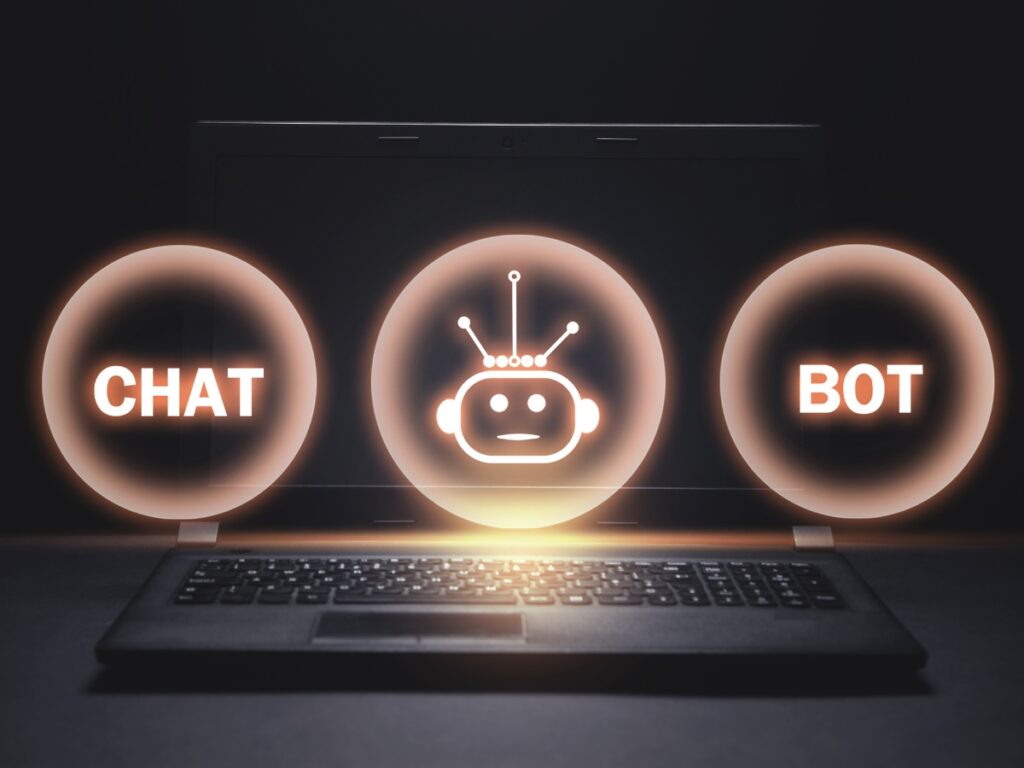
Diving into the World of Chatbot Scripts
As the digital landscape evolves, businesses and users gravitate towards instant, efficient communication methods. Chatbots, enabled by platforms like Botsify and MobileMonkey, have become indispensable tools in this context.
These virtual agents operate seamlessly, thanks to meticulously crafted chatbot scripts, enhancing user interactions and providing timely solutions. By diving into the world of chatbot scripts, organizations can unlock an unparalleled level of user engagement and operational efficiency.
What is a Chatbot Script? The Foundation of Conversational Design
At its core, a chatbot script is the predefined dialogue or set of responses that guide a bot’s interactions with users. It serves as the foundation of conversational design, ensuring that a chatbot’s answers are accurate and engaging.
Platforms like Chatfuel and Botpress empower developers to create and refine these scripts, merging technical precision with conversational flair. A well-crafted script, in essence, ensures that chatbots can replicate human-like interactions while maintaining consistency.
Why are Chatbot Scripts Pivotal for Enhanced Customer Service?
In the realm of customer service, timely and relevant responses are paramount. Chatbot scripts, honed with tools like Dialogflow and ZoConvert, play a crucial role in achieving this. They allow bots to provide instant solutions, answer FAQs, and easily handle complex queries.
By integrating scripts with platforms such as ManyChat or SnatchBot, businesses can ensure that customer interactions remain consistent, efficient, and tailored to individual needs, enhancing user satisfaction and loyalty.

Mastering the Art of Chatbot Script Writing
Crafting an effective chatbot script goes beyond mere dialogue creation; it requires a deep understanding of user behavior, business objectives, and conversational flow. Platforms like ChatterOn and Conversational Design UI Kits offer resources to assist developers in this endeavor.
By infusing personality, anticipating user needs, and iterating based on feedback, businesses can truly master the art of chatbot script writing. This mastery ensures that every interaction adds value, fosters trust, and deepens user engagement.
Mapping the User Journey: Setting the Stage for Script Success
Understanding the user journey is imperative to optimize the impact of chatbot scripts. Developers can better anticipate needs and address concerns by charting users’ typical interactions and touchpoints with a bot.
This comprehensive mapping ensures that hands are reactive and proactive, guiding users seamlessly from one phase to the next. Botpress, for example, leverages its open-source platform to allow for detailed journey customizations, making chatbot interactions feel more intuitive and user-centric.
Establishing Clear Goals: The Direction for Your Chatbot Scripts
Just like in any strategic endeavor, chatbot scripting must have explicit goals. Whether it’s customer support, lead generation, or product recommendations, having a distinct objective ensures the bot’s interactions are purpose-driven.
ManyChat emphasizes e-commerce and has scripts tailored to drive sales conversions, showcasing the importance of aligning scripts with business objectives. Without such clarity, chatbot engagements can feel aimless and potentially frustrate users.
Infusing Personality: Making Your Chatbot Relatable and Engaging
One key element that makes chatbot scripts successful is the bot’s personality. A well-defined character, whether professional, playful, or witty, can enhance user engagement and make interactions more human-like.
Platforms like Chatfuel and MobileMonkey offer templates that infuse distinct personalities into bots, ensuring they resonate with the target audience. However, while nature is essential, it’s crucial to strike a balance so the bot remains helpful and doesn’t overshadow its primary function.
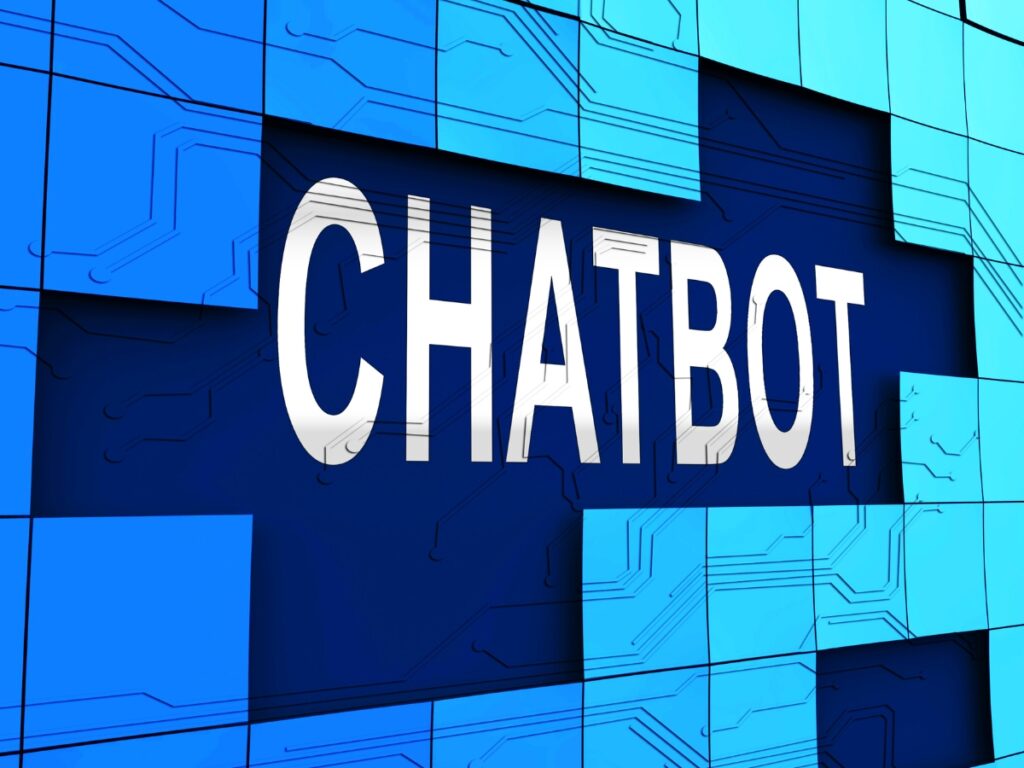
The Dialogue Tree: Structuring Fluid Conversations in Scripts
A dialogue tree lays the foundation for how a chatbot responds to various user inputs, ensuring that conversations flow naturally. A bot can maintain a structured yet fluid conversation by mapping potential user queries and responses.
Dialogflow, renowned for its natural language processing capabilities, provides tools for crafting intricate dialogue trees, making interactions appear seamless. Meanwhile, SnatchBot offers a robust script repository that developers can harness to ensure their bots navigate conversations effectively.
Script Optimization: Using A/B Testing and Iterative Refinement
Perfecting a chatbot script is an ongoing process. One of the most effective ways to gauge script performance is through A/B testing. This involves creating two script versions, exposing them to similar audiences, and measuring which delivers better results.
Through this, developers can identify phrases or conversation flows that resonate most with users. Iterative refinement goes hand-in-hand with this testing process. As user behavior and preferences evolve, so should chatbot scripts.
Platforms like Chatfuel and ManyChat provide tools for ongoing optimization, allowing businesses to continuously refine scripts based on real-time feedback and changing market dynamics.
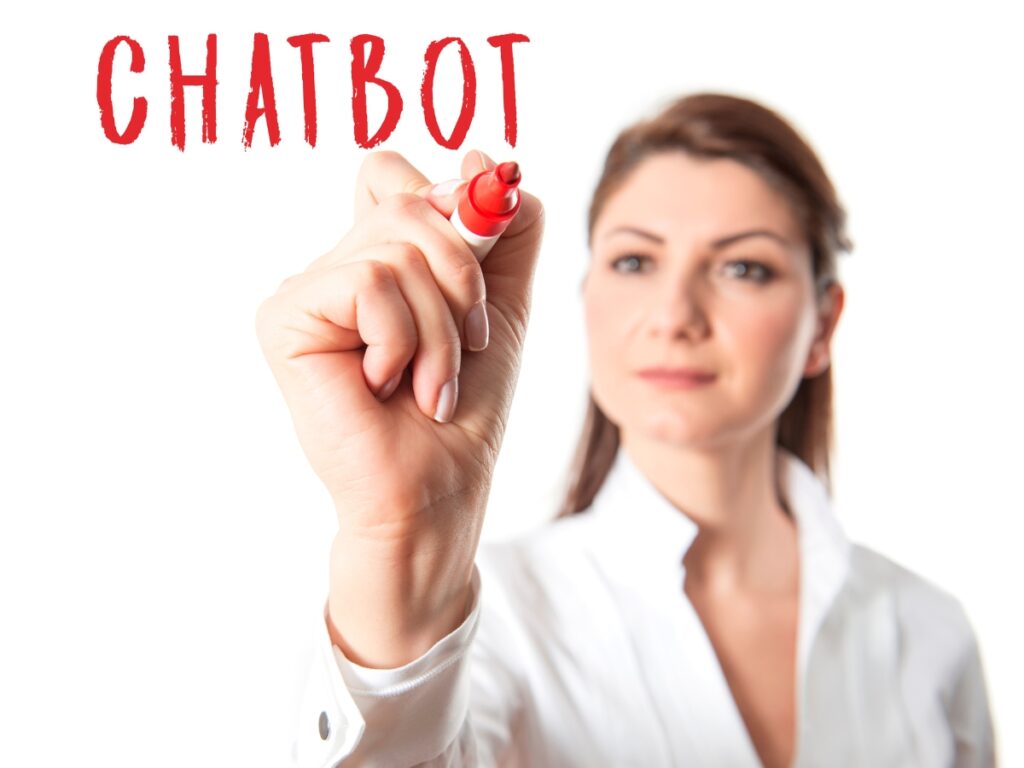
Leading Chatbot Script Platforms: In-Depth Analysis
Numerous platforms offer chatbot script creation and optimization features in today’s fast-paced digital environment. These platforms cater to various business needs, from e-commerce and customer support to lead generation.
By providing templates, customization tools, and analytics, they empower businesses to create chatbots that are not only functional but also deeply engaging. ZoConvert, for instance, specializes in scripts for Facebook Messenger, aiming to amplify user engagement on this platform.
Meanwhile, MobileMonkey boasts a rich library, offering hands suitable for many applications, demonstrating the diverse options available to developers.
Botsify: Tailored Scripts for Diverse Industries
Botsify has carved a niche for itself by providing predefined chatbot scripts tailored for a multitude of industries. Whether catering to hospitality, retail, or finance, Botsify ensures businesses have a head start in their chatbot development process.
Their scripts are crafted by experts who understand the unique demands of each sector, ensuring that chatbot interactions are relevant and drive desired outcomes. Moreover, the flexibility of Botsify’s platform allows businesses to customize these scripts further, ensuring that they align perfectly with brand voice and objectives.
Botpress: The Power of Open-Source Customization
Botpress stands out with its open-source approach to chatbot script development. The platform’s open nature means developers can dive deep into the script customization process, molding interactions to fit their brand and audience perfectly.
The open-source community around Botpress also offers a wealth of plugins and integrations, allowing businesses to expand their chatbot’s capabilities effortlessly. This combination of deep customization with a supportive community ensures that chatbots developed on Botpress are unique and highly functional, catering precisely to user needs and business objectives.
Chatfuel: A Haven of Chatbot Script Templates for the Aspiring Creator
Chatfuel is particularly revered among chatbot enthusiasts and businesses, serving as a sanctuary for those embarking on their chatbot creation journey. With its vast array of script templates, Chatfuel simplifies the process, allowing creators, regardless of their coding expertise, to craft compelling conversations.
The platform’s user-friendly interface and rich script repository empower beginners to design chatbots that resonate with their target audience. Further, with built-in analytics, businesses can monitor interactions and refine their scripts, ensuring they remain dynamic and user-centric.

Dialogflow: Marrying NLP with Customizable Chatbot Scripts
While Dialogflow is often celebrated for its prowess in natural language processing (NLP), it’s equally competent in chatbot script customization. This potent combination allows developers to create chatbots that understand and respond to user queries with human-like precision.
The platform’s advanced NLP capabilities ensure that chatbots can decipher the intent behind user inputs, leading to more accurate and contextually relevant responses. On the scripting front, Dialogflow provides tools that enable the crafting of fluid, organic conversations, making interactions feel less robotic and more akin to chatting with a human.
ManyChat: E-commerce Scripts that Convert and Engage
E-commerce platforms continually seek ways to elevate the shopping experience, and ManyChat provides the arsenal to achieve just that. Focusing predominantly on e-commerce, ManyChat’s scripts are tailored to guide users through sales seamlessly. Whether product recommendations, order updates, or addressing queries, the platform’s scripts are designed to keep customers engaged and drive conversions.
By integrating visually appealing carousels and instant purchase options within conversations, ManyChat chatbots don’t just inform; they catalyze sales, transforming casual browsers into loyal customers.
ChatterOn: Rapid Chatbot Development with Predefined Scripts
For businesses and developers seeking a quick entry into the world of chatbots, ChatterOn is a game-changer. This platform stands out with its extensive library of predefined scripts, enabling rapid chatbot deployment across various domains. Crafted by industry experts, these scripts ensure businesses don’t have to start from scratch.
They provide a robust foundation that can be further tweaked and customized to align with specific brand voices and goals. ChatterOn’s intuitive interface also ensures that even those new to chatbot development can easily navigate the platform, accelerating their journey from ideation to execution.
Conversational Design UI Kits: Enhancing User Interface and Script Tailoring
Conversational Design UI Kits are indispensable tools in the chatbot arena, merging aesthetics with functionality. These kits comprise a comprehensive set of user interface elements tailored explicitly for chatbots, ensuring an immersive user experience.
But they aren’t just about visual appeal; these kits also come with tailored scripts, allowing developers to align conversation flow with the design. This harmony between UI and scripting ensures that users enjoy visually pleasing interactions and find them intuitive and engaging.
By leveraging these UI kits, businesses can significantly enhance the efficiency and appeal of their chatbot interfaces.

Drift: A Platform Driving Lead Generation Through Script Templates
For businesses focused on augmenting their lead generation efforts, Drift emerges as a top contender. Recognized as a conversational marketing platform, Drift excels in providing script templates that aren’t just about conversation – they’re about conversion.
Each script is meticulously designed to guide potential leads down the sales funnel, addressing their queries, dispelling doubts, and nudging them toward a favorable action. With real-time analytics and insights, businesses can monitor chatbot performance, identify potential bottlenecks, and refine scripts, ensuring they remain a potent tool in the lead generation arsenal.
Flow XO: Championing a Broad Spectrum of Chatbot Workflows and Scripts
Diversity is at the heart of Flow XO. The platform supports many prebuilt chatbot workflows and scripts, catering to various industries and functionalities. Whether a business aims to provide customer support, conduct surveys, or facilitate e-commerce transactions, Flow XO has a script to match the need.
This wide variety ensures that organizations can pick and customize scripts that align closely with their objectives, reducing the development time and providing a smooth user experience. Moreover, the platform’s drag-and-drop interface simplifies the process, making chatbot creation accessible to all.
MobileMonkey: A Rich Repository of Adaptable Chatbot Scripts
MobileMonkey has carved its niche by offering an extensive collection of adaptable chatbot scripts. Catering to diverse business needs, the platform ensures that chatbot creators aren’t confined to rigid templates. Instead, they’re granted the flexibility to mold and tailor scripts per their unique requirements.
From handling customer inquiries to promotional campaigns, MobileMonkey’s writings can be adapted to fit various conversational scenarios. The platform also emphasizes integration with popular social media channels, ensuring businesses can leverage these scripts to engage their audience wherever they are most active.

SnatchBot: Diverse Scripts Catering to Varied Bot-Building Needs
SnatchBot stands out in the crowded chatbot market by offering an eclectic range of scripts tailored to fit an extensive array of bot-building scenarios. Recognizing that no two businesses are alike, the platform provides hands that cater to everything from customer support and sales to event registration and feedback collection.
This diversity ensures companies can seamlessly integrate bots into their operations, enhancing efficiency without compromising user experience. Furthermore, with SnatchBot’s intuitive interface, even those new to chatbot creation can dive in and craft bots that resonate with their audience.
Tars: Tailored Templates and Scripts for Business-Centric Needs
In the modern business landscape, where customization is paramount, Tars emerges as a champion. Specializing in offering templates and scripts centered around business needs, Tars ensures that every interaction adds value.
Whether lead generation, appointment scheduling, or customer service, the platform’s scripts are honed to drive results. Moreover, Tars recognizes the importance of a cohesive brand experience, allowing businesses to infuse their brand voice and persona into writing, ensuring that bots become integral to the brand’s digital identity.
ZoConvert: Scripts Amplifying Engagement on Facebook Messenger
ZoConvert understands the burgeoning potential of Facebook Messenger as an engagement channel, and its offerings reflect this insight. Specializing in scripts tailored for Messenger bots, ZoConvert focuses on creating interactions that are not just conversational but also engaging.
From promotional campaigns and flash sales to quizzes and polls, the platform’s scripts ensure businesses can fully leverage the vast user base of Facebook Messenger. By integrating advanced features like cart abandonment reminders and targeted push notifications, ZoConvert ensures that companies can maintain a persistent and productive dialogue with their audience.

Examples & Templates: Chatbot Scripts in Action
While understanding the theory behind chatbot scripts is essential, seeing them in action illuminates their potential. Effective chatbot scripts have transformed user interactions across industries, from e-commerce to healthcare, making them more intuitive, engaging, and result-driven.
For instance, a well-crafted welcome script can set the tone for a positive user experience, while a product recommendation script can easily guide users through the sales funnel. By studying real-world examples and templates, businesses can glean insights into best practices, understanding what works and, just as importantly, what doesn’t.
These actionable insights can then inform their chatbot script strategy, ensuring effectiveness and user satisfaction.
Scripts for Welcoming Users: First Impressions Matter
In the realm of chatbot interactions, first impressions are paramount. When users interact with a chatbot, the initial greeting can set the tone for the conversation. Crafting a welcoming script that resonates with the audience is akin to having a warm, friendly receptionist at the front desk of an office.
It should be inclusive, attentive, and, above all, reflective of the brand’s voice. By integrating personal touches, such as addressing users by their names or offering tailored greetings based on time zones, chatbots can create an immediate connection, encouraging users to engage further.
Product Recommendation Scripts: Navigating the Sales Process
The digital marketplace is saturated, making the task of guiding users towards relevant products and services pivotal. Chatbots can streamline this journey with product recommendation scripts, offering curated suggestions based on user preferences, browsing history, and purchase patterns.
These scripts are not merely about suggesting products but creating a dialogue that understands and caters to user needs. By employing advanced algorithms and leveraging user data, chatbots can provide recommendations that feel personalized, enhancing the chances of conversion and bolstering sales.
Ending Conversations on a High Note: Leave Them Wanting More
Just as the beginning of a conversation is crucial, how it concludes holds equal weight. A well-structured sign-off script can be the cherry on a fruitful chatbot interaction. It’s not merely about saying goodbye; it’s about reinforcing the brand’s message, offering further assistance, or even introducing users to additional resources.
Whether a simple “Thank you for chatting with us!” or a more elaborate invitation to explore other services, ensuring users leave the chat feeling satisfied and valued can significantly impact their likelihood to return.

Measuring Script Effectiveness: Metrics and KPIs
For chatbot scripts to consistently deliver, it’s imperative to gauge their effectiveness. Businesses can derive actionable insights into script performance by focusing on critical metrics and KPIs. Metrics like user engagement rate, conversion rate, and user feedback can offer a holistic view of a script’s efficacy.
Additionally, by analyzing drop-off points within conversations, businesses can pinpoint areas of improvement. Regularly assessing metrics like response time, user satisfaction scores, and the number of successfully resolved queries can ensure that chatbot scripts remain optimized, aligned with user needs, and poised to drive results.
Key Metrics to Gauge Your Chatbot Script’s Success
Effectively measuring the success of chatbot scripts goes beyond just looking at engagement numbers. Here are several critical metrics businesses should consider:
- User Engagement Rate: How often and how long users interact with the chatbot. Tools like MobileMonkey can offer insights into these metrics.
- Conversion Rate: It defines the percentage of users who take the desired action after interacting with the chatbot, be it signing up, making a purchase, or any other goal. ManyChat specializes in e-commerce scripts that aim to bolster this rate.
- User Satisfaction Score: Gained from direct feedback, this metric helps assess how pleased users are with their chatbot interaction. Platforms like Dialogflow can integrate feedback mechanisms within scripts.
- Drop-off Rate: It indicates where users commonly leave the conversation, helping businesses identify and rectify friction points.
- Number of Successfully Resolved Queries: This helps determine the efficiency and effectiveness of the chatbot in addressing user needs.
Using Feedback to Refine and Optimize Your Scripts
Active feedback collection is a goldmine for chatbot script optimization. It offers direct insights from users about their experience, preferences, and any pain points they encountered. SnatchBot, for instance, facilitates a mechanism for accumulating and analyzing user feedback.
Scripts can be iteratively refined by integrating this feedback to address user expectations better. Coupled with A/B testing – for example, trying out different greeting scripts or response templates – businesses can continuously improve chatbot efficiency and user satisfaction.

The 9 Proven Strategies to Supercharge Your Chatbot Scripts
- Personalization: Tailor interactions based on user data and behavior. Platforms like Botsify offer tailored scripts to enhance this.
- Clarity and Brevity: Keep scripts concise and to the point, avoiding jargon.
- Active Listening: Design scripts that show the bot understands user input.
- Prompt Feedback Collection: As seen with tools like ChatterOn, immediate feedback helps optimize real-time.
- Incorporate Visual Elements: Enhance scripts with images, GIFs, or videos where relevant.
- Continuous Testing: Always be in the loop of testing, refining, and optimizing.
- Integrate with CRM: Platforms like Flow XO allow seamless integration with CRM systems, enabling more prosperous and informed interactions.
- Stay Updated: Regularly update scripts based on current events, user behavior, and feedback.
- Ethical Considerations: Ensure scripts prioritize user privacy and adhere to regulatory guidelines.
Integrations, Tools, and Advanced Chatbot Functionalities
The chatbot ecosystem has seen a surge in advanced tools and integrations designed to enhance script functionalities. Integrating with CRM systems, as facilitated by Tars, can lead to richer user-profiles and tailored interactions.
Natural Language Processing (NLP) integrations, like those seen in Dialogflow, empower chatbots to understand and respond to user inputs more organically. Additionally, platforms like ZoConvert focus on specific channels like Facebook Messenger, ensuring scripts are optimized for particular audience interactions.
When harnessed correctly, these advanced functionalities can significantly elevate the chatbot experience.

Tools and Integrations to Enhance Script Functionalities
Tools and integrations have become indispensable to supercharge chatbot scripts in the digital age. Platforms like Flow XO provide a broad spectrum of prebuilt workflows, enhancing the chatbot experience.
MobileMonkey takes this a notch higher by offering a rich repository of adaptable chatbot scripts that can be integrated seamlessly with other tools. Advanced integrations can empower chatbots to pull in real-time data, connect with e-commerce platforms, or even integrate with social media channels.
For instance, ZoConvert specifically targets Facebook Messenger, ensuring that this platform’s scripts are primed for engagement.
The Role of CRM and Analytics in Chatbot Scripts
CRM (Customer Relationship Management) systems shape the chatbot experience. They store valuable customer data, which can tailor interactions to individual users when integrated with chatbots via platforms like Tars.
Beyond personalization, CRMs can inform scripts about past user interactions, purchase histories, and preferences, ensuring the chatbot’s response is relevant and timely. Analytics, on the other hand, serves as the feedback loop.
With platforms like Dialogflow, businesses can gauge chatbot performance, identify areas of improvement, and iteratively refine scripts to ensure they are continually optimized for the best user experience.
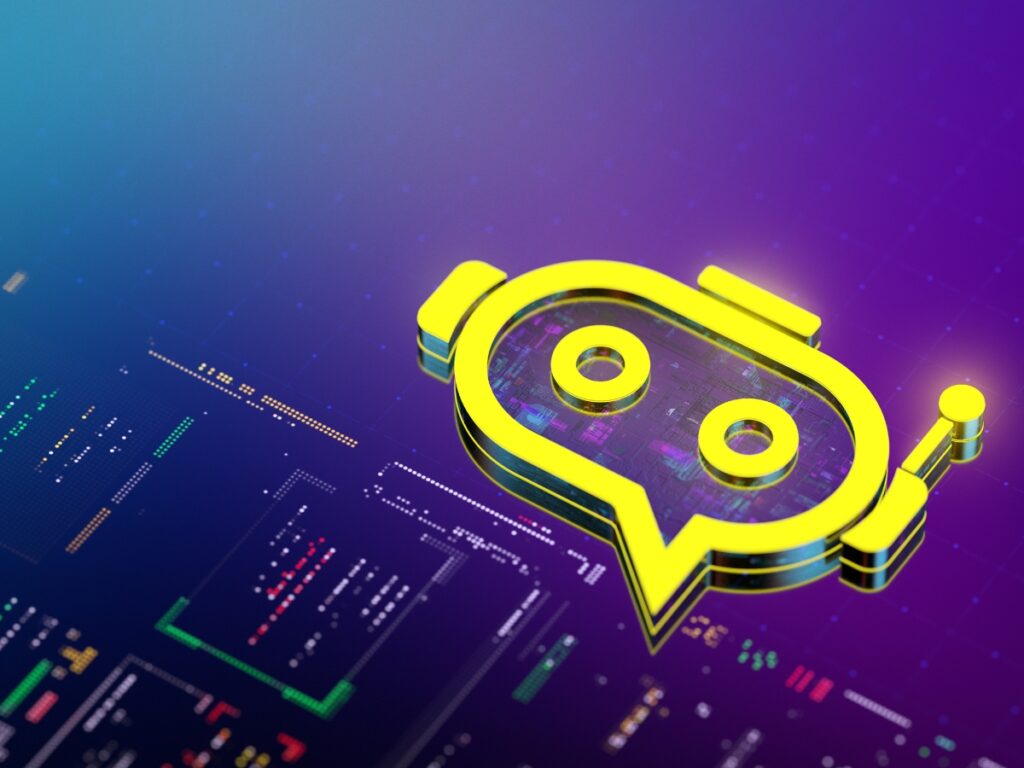
Ensuring Chatbot Scripting Ethics and Best Practices
Ethics in chatbot scripting is non-negotiable. It’s crucial to ensure that scripts are unbiased, respectful, and provide accurate information. Platforms like ChatterOn emphasize the importance of adhering to ethical standards, ensuring that predefined scripts align with industry norms.
Moreover, transparency is critical. Users should always be aware they are interacting with a bot and should have the option to connect with a human if needed. Maintaining a friendly tone, avoiding aggressive marketing tactics, and ensuring cultural sensitivity can go a long way in establishing trust.
Prioritizing User Privacy and Ensuring GDPR Compliance
Protecting user privacy is paramount. Chatbot scripts must be designed to avoid unnecessary data collection and inform users about the collected data. GDPR (General Data Protection Regulation) has set precise data collection and usage guidelines for entities operating within the European Union.
Platforms like Botsify and SnatchBot ensure their chatbot scripts adhere to GDPR compliance. This means hands should have precise opt-in and opt-out mechanisms, transparent data usage policies, and robust data encryption practices. Prioritizing privacy adheres to regulations and instills trust and confidence in users.
Emerging Trends in Chatbot Scripting
Chatbot scripting is ever-evolving, with new trends shaping the landscape. One such trend is the move towards more personalized and context-aware scripting, made possible by integrating platforms like MobileMonkey and Flow XO.
Natural Language Processing, as seen in media like Dialogflow, enables chatbots to understand and process user input more naturally. Moreover, the rise of voice chatbots necessitates scripts that cater to conversational tonality. Another significant trend is the integration of Augmented Reality (AR) and Virtual Reality (VR) in chatbot interactions, allowing users to engage in a more immersive experience.
With platforms like Tars and ManyChat, interactive storytelling through scripts is gaining traction, enhancing user engagement and retention.

FAQs: Addressing the Top Queries on Chatbot Scripts
Chatbot scripts, though powerful, often lead to numerous questions from businesses keen to leverage their potential. One common query is the ideal frequency for script updates.
Platforms like ZoConvert and Chatfuel offer insights, suggesting periodic reviews to ensure relevancy. Another frequent question revolves around striking the right balance between automation and the human touch.
Tools like Drift emphasize that while automation can handle most queries, a seamless handover to human agents is essential for complex issues.
How Often Should Chatbot Scripts Be Updated?
The dynamism of user behavior and industry standards necessitates regular script updates. While there’s no one-size-fits-all answer, platforms like Botpress and ChatterOn recommend a periodic review, at least quarterly, to keep scripts fresh and relevant.
Regular A/B testing, user feedback, and analytics from platforms like SnatchBot can provide insights into what’s working and needs tweaking. Moreover, any significant changes in product offerings, business policies, or industry regulations should trigger an immediate script review.
What’s the Balance Between Human Touch and Automation in Scripts?
Striking the right balance is pivotal. While automation, facilitated by platforms like Botsify, can handle repetitive tasks and basic queries, the human touch is irreplaceable for nuanced conversations. Scripts should be designed to recognize when a user is frustrated, or the question is too complex.
As seen in platforms like MobileMonkey, integrations with CRM systems can help identify such scenarios and ensure a smooth transition to human agents. The goal is to combine automation’s efficiency with a human’s empathy and understanding.

Conclusion: Looking Forward and the Evolution of Chatbot Scripts
Chatbot scripts are the backbone of effective and engaging conversational experiences in the digital age. Their evolution has been remarkable, transitioning from simple, static dialogues to dynamic interactions that can mimic human conversations.
As businesses continue to harness the potential of AI and machine learning, the expectations surrounding chatbot scripts will only soar higher. The road ahead promises even more sophisticated, context-aware, and adaptable scripts, shaping the future of how we communicate and interact with technology.
The next chapter of chatbot scripts holds immense potential, and as we move forward, the blend of technology, creativity, and user experience will define their trajectory.

You Might Also Like
If you enjoyed this article and received value from it, check out the other Blue Lane Group articles in the Best Chatbots for Customer Service: Blueprint for Success in 2023 series:
- Chatbot ROI: Unlock Unmatched Profits with Top 5 Strategies for Optimization
- Omnichannel Chatbots: Unlock Consistent Engagement with 7 Best Practices
- Chatbot KPIs: 10 Essential Metrics to Drive Optimal Results
- Multilingual Chatbots: Break Language Barriers with 8 Leading Solutions
- Enterprise AI Chatbot Solutions: 7 Key Tools to Supercharge Your Business
- Mastering Chatbot Training: 7 Strategies for Optimal User Engagement
- Chatbot APIs: 6 Leading Options for Seamless Functionality
- Chatbot Scripts: 9 Proven Strategies to Boost Conversions and Engagement
- Rule-Based Chatbots: Drive Consistent Responses with Top 9 Benefits
- Chatbot Success Metrics: Unlock Optimal Performance with Top 10 Insights
- Chatbot Analytics: Drive Excellence with 10 Essential Tools
- Mastering Interactivity: Top 10 Chatbot Frameworks Explored
- Chatbots in Retail: 7 Winning Strategies for Elevated Customer Engagement
- Chatbots for Lead Generation: 6 Best Practices to Transform Your Funnel
- Chatbot Integrations: 6 Essentials for Enhanced Productivity and Operations
- Chatbot UX: Enhance Engagement with These 8 Vital Principles
- Chatbot Security: 7 Essentials to Safeguard Your Business
- Chatbot Development Services: 7 Must-Knows to Boost Your ROI
- Chatbots in Healthcare: 6 Leading Innovations Revolutionizing Patient Care
- NLP for Chatbots: Top 6 Techniques Transforming Chat Experiences
- Benefits of Chatbots in Customer Service: 7 Key Sales Boosters
- 7 Essential Social Media Chatbots for Unmatched Engagement
- Building Chatbots Powered by AI: 5 Proven Techniques for Epic Profits


